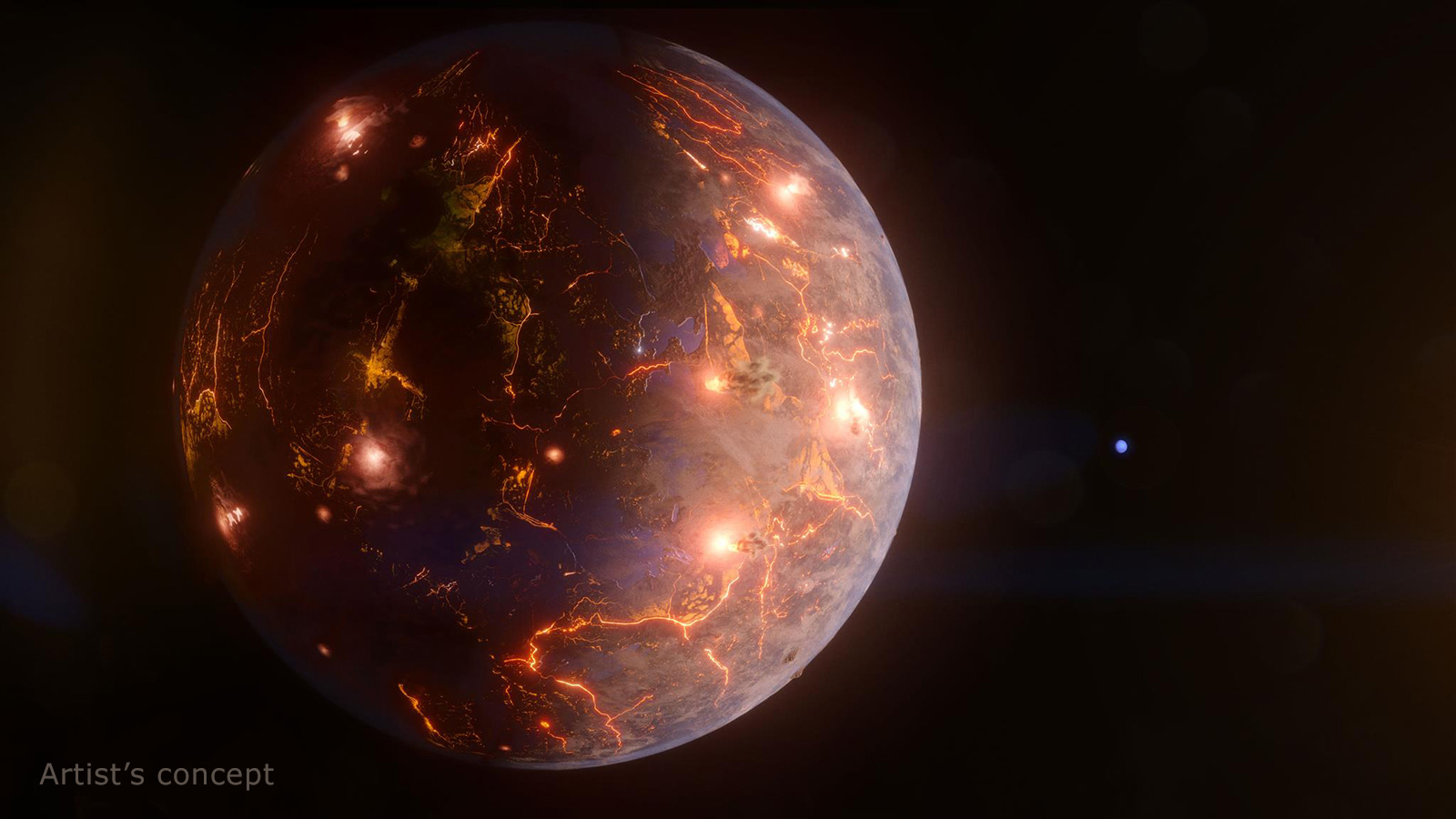Volcanoes may carpet surface of newfound Earth-size exoplanet
A newfound alien world about the size of Earth may be studded with active volcanoes, whose emissions could sustain an atmosphere, a new study reports.
The exoplanet, known as LP 791-18 d, orbits a red dwarf star about 90 light-years from Earth, in the southern constellation Crater. It's slightly larger and more massive than Earth, according to the study team — and it's probably much more volcanically active than our planet.
"LP 791-18 d is tidally locked, which means the same side constantly faces its star," co-author Björn Benneke, an astronomy professor at the University of Montreal's Institute for Research on Exoplanets who planned and supervised the study, said in a statement.
"The day side would probably be too hot for liquid water to exist on the surface," Benneke said. "But the amount of volcanic activity we suspect occurs all over the planet could sustain an atmosphere, which may allow water to condense on the night side."
Related: The 10 most Earth-like exoplanets
The study team found and characterized LP 791-18 d using data gathered by NASA's Transiting Exoplanet Survey Satellite (TESS) and the agency's Spitzer Space Telescope.
TESS is actively hunting for exoplanets from Earth orbit, watching for the telltale brightness dips caused when these worlds cross their host stars' faces from the satellite's perspective.
Breaking space news, the latest updates on rocket launches, skywatching events and more!
Spitzer was retired in January 2020; the LP 791-18 d observations were among the last the infrared-optimized scope made before it was decommissioned, NASA officials said. (Spitzer isn't necessarily done for good, however; a private team has proposed resurrecting the telescope, which was shut down mainly to free up resources for NASA's James Webb Space Telescope.)
LP 791-18 d is the third planet found in this particular star system, along with LP 791-18 b and c. Planet b, the innermost of the three, is about 20% larger than Earth. Planet d, the outermost world, is about 2.5 times wider than Earth and at least seven times more massive, team members said.
Planets c and d pass relatively close to each other during their orbits around the red dwarf host star. These interactions have significant consequences for the newfound exoplanet.
"Each close pass by the more massive planet c produces a gravitational tug on planet d, making its orbit somewhat elliptical," NASA officials said in the same statement.
"On this elliptical path, planet d is slightly deformed every time it goes around the star," they added. "These deformations can create enough internal friction to substantially heat the planet's interior and produce volcanic activity at its surface. Jupiter and some of its moons affect Io in a similar way."
Such "tidal heating" makes Io, one of Jupiter's four big Galilean moons, the most volcanically active body in the solar system. Io harbors a wispy atmosphere dominated by sulfur dioxide, but the much larger LP 791-18 d is likely able to hang on to more of its volcanic gases. And the planet's night side may be cool enough to support liquid water, as Benneke noted.
That doesn't necessarily make planet d a great candidate to host life as we know it; the world may be roiled by too much volcanism. Still, the newfound world is an inviting target for astrobiologists and researchers interested in the formation and evolution of exoplanet atmospheres.
"A big question in astrobiology, the field that broadly studies the origins of life on Earth and beyond, is if tectonic or volcanic activity is necessary for life," study co-author Jessie Christiansen, of NASA's Exoplanet Science Institute at the California Institute of Technology in Pasadena, said in the same statement.
"In addition to potentially providing an atmosphere, these processes could churn up materials that would otherwise sink down and get trapped in the crust, including those we think are important for life, like carbon," Christiansen added.
Follow-up work in the system will likely be coming soon: LP 791-18 c is already an approved target for future James Webb Space Telescope observations, and planet d could make it onto the list as well.
The new study was published online today (May 17) in the journal Nature.

Michael Wall is a Senior Space Writer with Space.com and joined the team in 2010. He primarily covers exoplanets, spaceflight and military space, but has been known to dabble in the space art beat. His book about the search for alien life, "Out There," was published on Nov. 13, 2018. Before becoming a science writer, Michael worked as a herpetologist and wildlife biologist. He has a Ph.D. in evolutionary biology from the University of Sydney, Australia, a bachelor's degree from the University of Arizona, and a graduate certificate in science writing from the University of California, Santa Cruz. To find out what his latest project is, you can follow Michael on Twitter.

